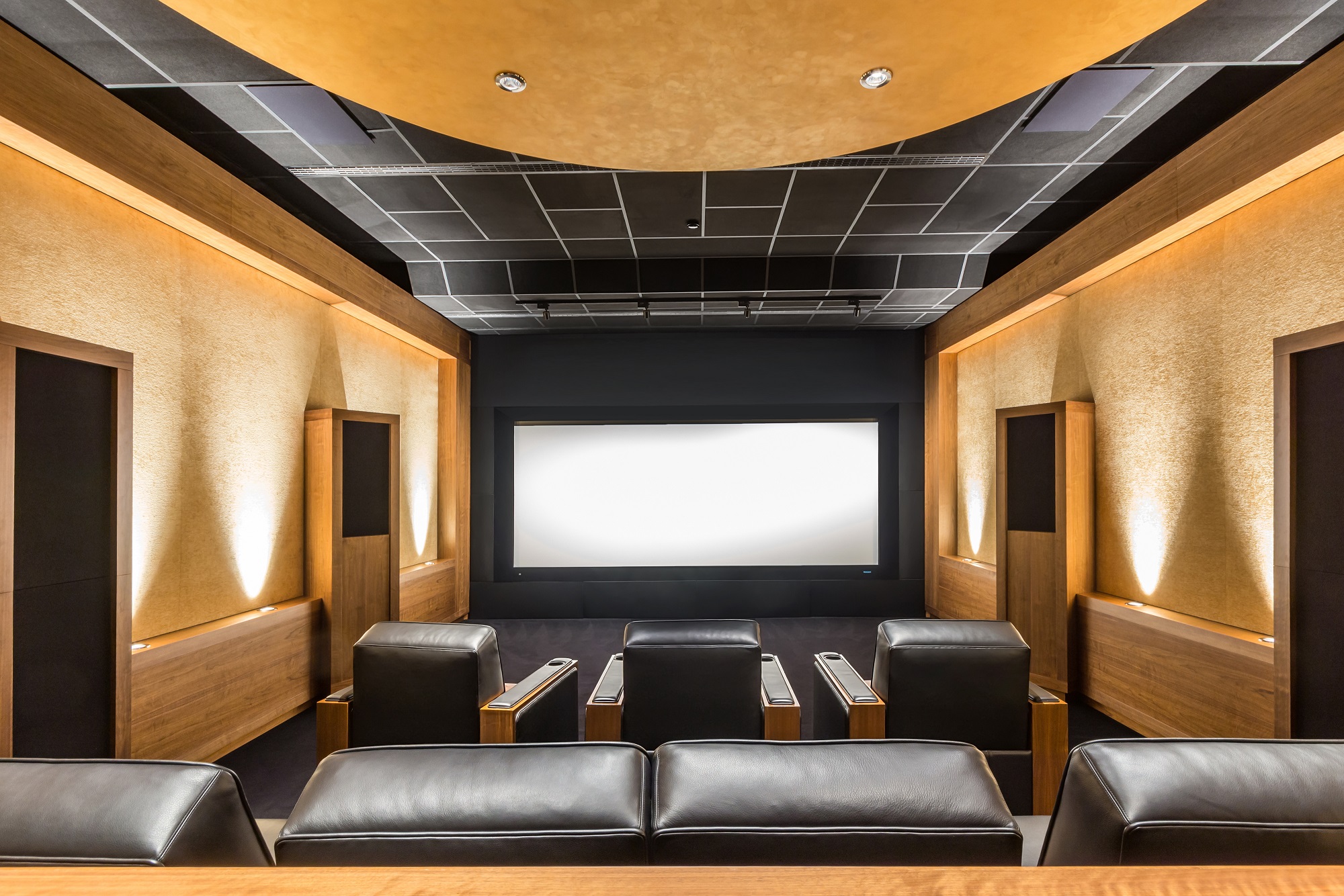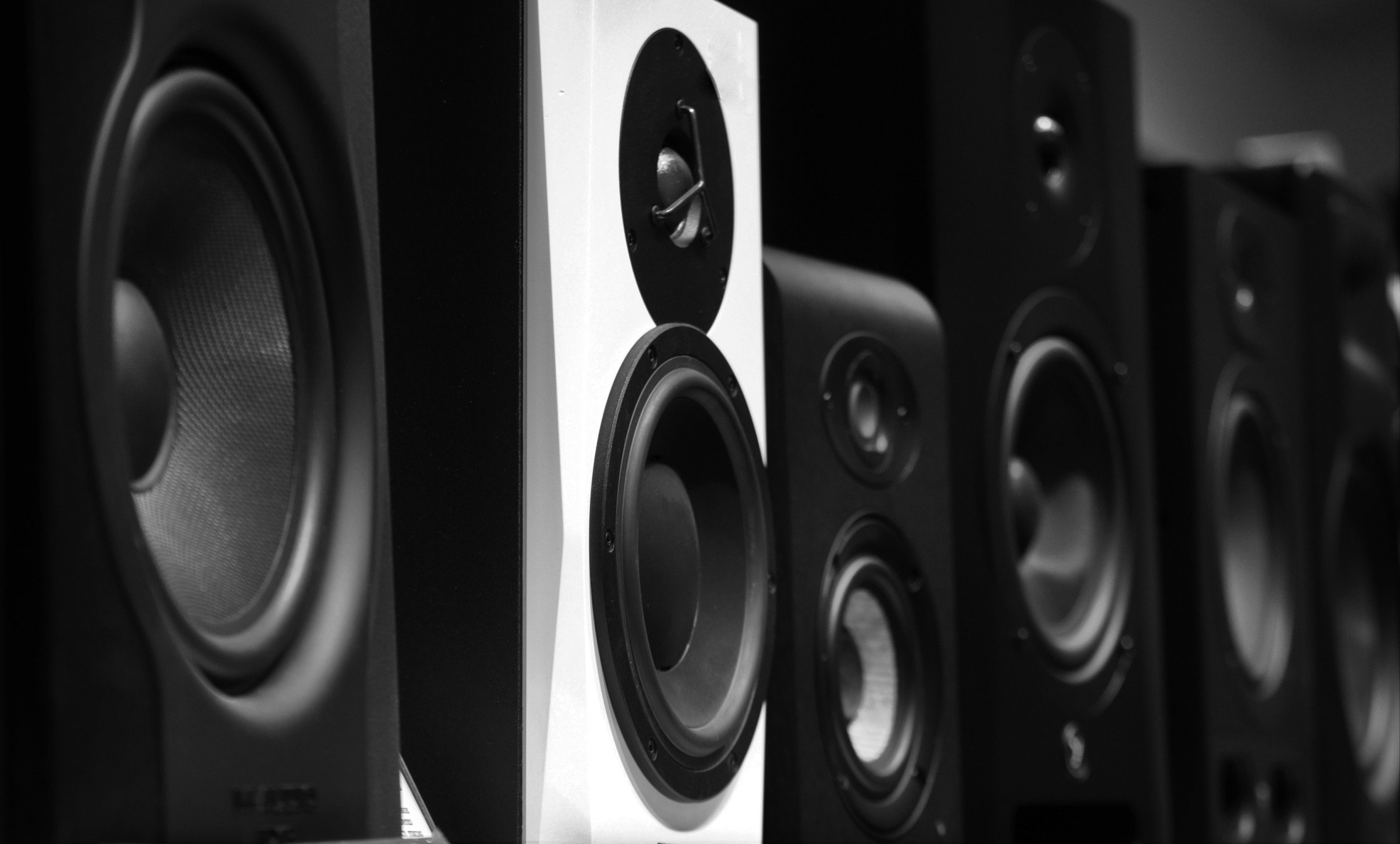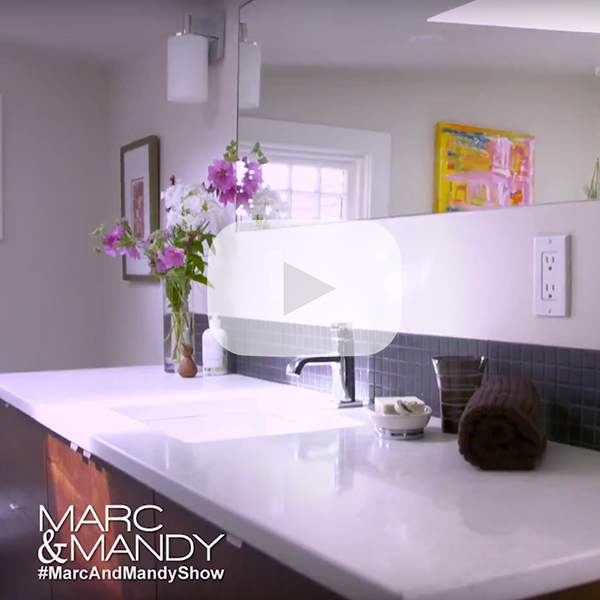These days, home theatres are not just for the wealthy. But when you’re building and designing your own theatre, what should you consider? On our podcast, All Things Renovation, we interviewed Sandy Macdonald from La Scala Integrated Media, and this is a summary of what we learned.
What do we need to be thinking about as homeowners in order to put a home theatre in our house?
Dimensions
As always, good planning is key! Whether you’re renovating or it’s a new build, you can make your room better for sound. First of all, don’t build a square room, it will sound odd! The sound you hear will differ between houses, even in the same size of room, using the same equipment.
Rooms whose dimensions are related by multiples tend to be bad for home theatres, as the dimensions mean that many of the same frequencies will resonate more loudly than the others, leading to uneven sound. An example of this would be a 10 foot by 20 foot room – 10 multiplies evenly into 20. It’s better to have one dimension that isn’t a multiple of the other, such as 13 feet by 20 feet.
Sound Isolation
Movies are typically played a little louder and there are a lot of dynamic sounds, so it’s best to isolate home theatres from the rest of the house. The best way to do that is to stagger your studs. Instead of putting drywall on both sides of the studs as is normally done when building rooms, add another layer of studs inside your home theatre room, with the studs staggered. This creates a bigger gap between the drywall, which reduces the vibrations of the sound as it travels through the air. Another option is to double up on the drywall, which will resonate less than a single layer. Repeat the same treatment on your ceiling as you have on your walls.

How to build a good sound system
You want to create a wide frequency range, so size matters. Advertising will tell you that you don’t need big speakers anymore, but that’s just marketing. They are trying to appeal to the people that want things to be invisible. We have come up with a number of ways to hide the components of your sound system, such as built-in (in-wall) speakers. The speaker itself is hidden in the wall, and the grill can be painted to match the wall colour. The higher the quality of the speakers, the higher the accuracy of the sound reproduction (i.e., everything sounds like it is supposed to sound). Invisible speakers are a new product on the market now too.
What you’re buying equipment, the parts of the system will vary in quality. The quality of the reproduction by the speaker is going to be dependent on the quality of the source and of the amplifier. If you get an amplifier that is weak, you’re not going to get the amplification out of that speaker that you could. Changing the quality of one of those components changes the overall result.
Components
- Receiver
A receiver provides the best value for the power, controls and inputs from your various sources.
- Amplifier
These days, if you can’t actually listen to an amplifier in person, the best way to choose one is to read online reviews. If you can’t read reviews, choose the one that is heaviest, as it will be the one that has the largest power supply.
In a small room, which is what most people have, a 5.1 amplifier is sufficient. There are 5 channels of output (to speakers), located on the front (left and right), centre, rear (left and right), and the subwoofer (this is the .1). However, nowadays, most have a minimum of 7 channels of output. It is actually better to buy fewer speakers but get better quality ones to get a better experience.
- Speakers
A 6″ woofer and tweeter combination is the smallest recommended speaker. You will also need a 10″-12″ subwoofer. They range from 6″ to 30″ but you don’t need a large one, and any smaller won’t reproduce the lowest frequencies or the output capability that you need to get a good experience.

Can home theatres be controlled from your phone?
You can have a super fancy system but if you can’t run it, it might as well not exist. There are phone apps that will control parts of your system, but the easiest way to control everything overall is using a handheld remote.
What do we need to be aware of for heat mitigation?
When you’re watching a movie with a group of people, the heat in the room will increase over the course of several hours. Putting in an isolated air conditioning system is a good idea as it allows for complete comfort control.
Some equipment will generate more heat than others. People often want all their electronics hidden behind closed doors in a cabinet. However, this will cause it all to overheat, so anything in a cabinet has to be ventilated out into the rest of the house. Your cable box is often the worst culprit for overheating when behind closed doors!
Other considerations
- Figure out how much power you need to run your home theatre, and you will want to make sure you have a dedicated electrical circuit for that room.
- If you’re going to choose a projector, which can create a large screen, choose one with a fan that doesn’t make a lot of noise so that it doesn’t ruin the quietest moments in a movie.
- Televisions are getting so large now that there is less need to go to a projector for a large screen. However, you will need to reinforce your wall with plywood behind the drywall between the studs in order to bear the weight of the TV.
How much should you budget?
Everyone needs to decide their own budget. Expect to spend $10,000 at the very least to get any semblance of reasonable quality. It’s more about what you’re going to get for your money than the actual amount that you spend. Also, focus on the quality of the sound reproduction rather than the latest gimmicks.
To listen to the full episode and read the show notes, visit www.AllThingsRenovation.com or click on the Podcast tab at the top of our homepage at www.woodbeart.com.


